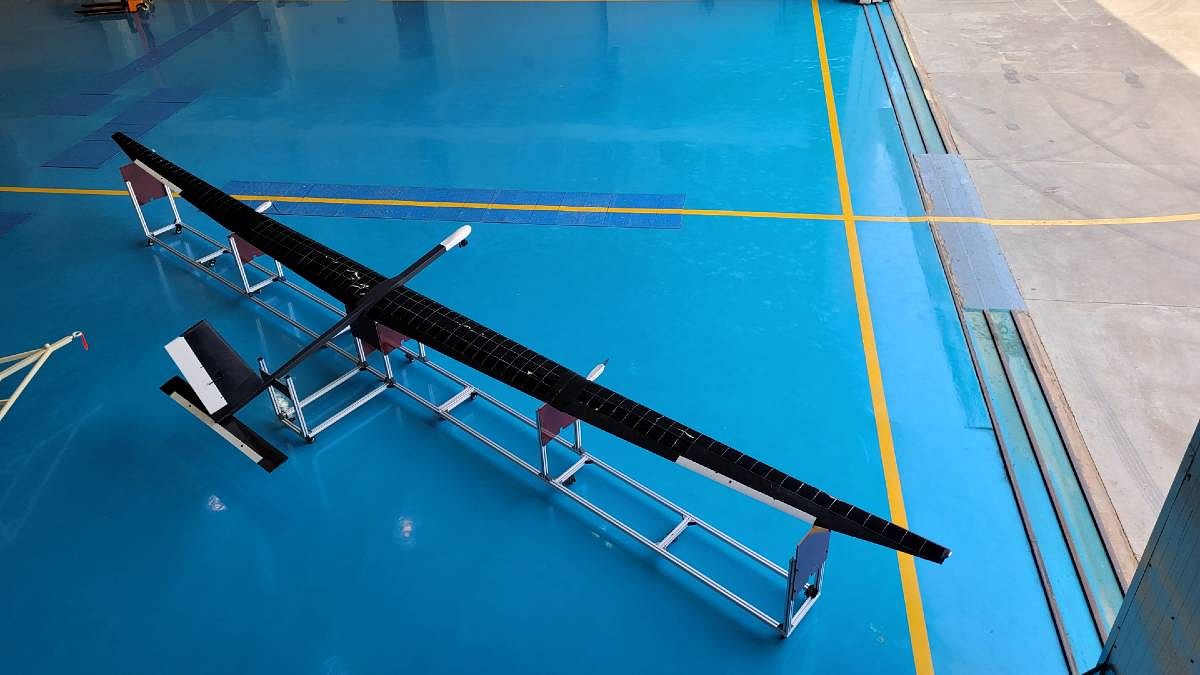SOURCE: RAUNAK KUNDE / NEWS BEAT / IDRW.ORG


India’s National Aerospace Laboratories (CSIR-NAL) is soaring towards the next stage of its high-altitude platform (HAP) development. Building on the success of a recent sub-scale test flight, CSIR-NAL is set to construct a full-scale prototype equipped with cutting-edge features.
The May 7th test flight of a sub-scale vehicle proved to be a valuable learning experience. The flight saw the vehicle reach an altitude of 3,000 feet while carrying a synthetic aperture radar payload developed by the Indian start-up Galaxeye Space. Following the payload drop, the vehicle climbed even higher, reaching an impressive 25,000 feet.
The upcoming full-scale version will be a significant leap forward compared to its sub-scale predecessor. The most notable differences will be in size and propulsion systems. The full-scale HAP will boast a wingspan of 35 meters, comparable to that of a commercial Airbus A320 aircraft.
Despite its impressive size, the full-scale platform will remain lightweight, weighing approximately 150 kg. This allows for efficient operation at high altitudes. The full-scale HAP will be able to carry payloads of up to 15 kg, making it suitable for various applications.
CSIR-NAL is taking an innovative approach to the full-scale vehicle’s power source. Instead of conventional silicon solar cells, they will be utilizing gallium arsenide solar cells produced by the US company MicroLink. These advanced solar cells boast a 30% solar-to-electricity conversion rate, a significant improvement over the 20% efficiency limit of traditional silicon cells.
The full-scale HAP will also incorporate autopilot capabilities. While the hardware for this system will be procured externally, CSIR-NAL plans to develop the software in-house. This demonstrates India’s commitment to not only acquiring but also mastering advanced aerospace technologies.
Full-scale HAP will be rolled out likely by the end of 2025 if all goes as planned for the NAL.
NOTE : Article cannot be reproduced without written permission of idrw.org in any form even for YouTube Videos to avoid Copy right strikes. Websites doing illegal reproductions will get DMCA and Legal Notices.